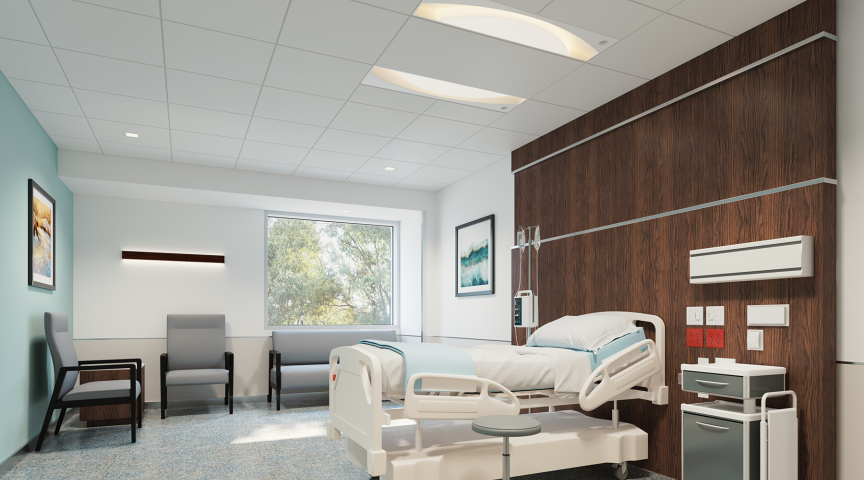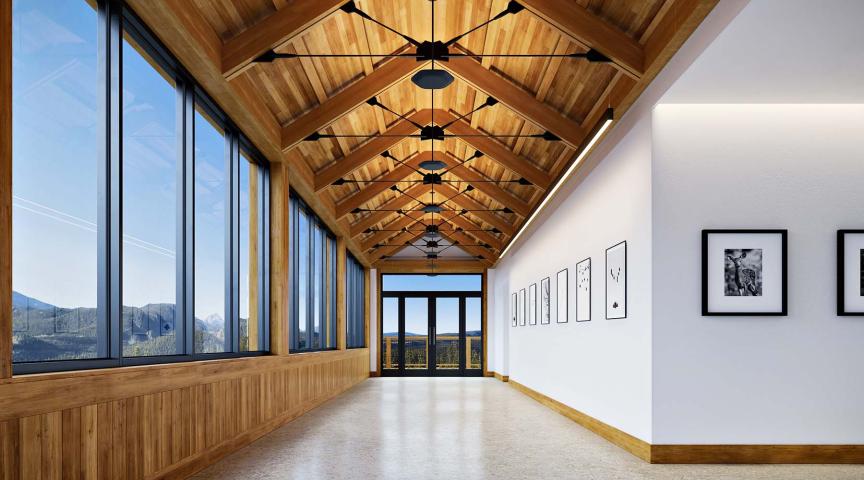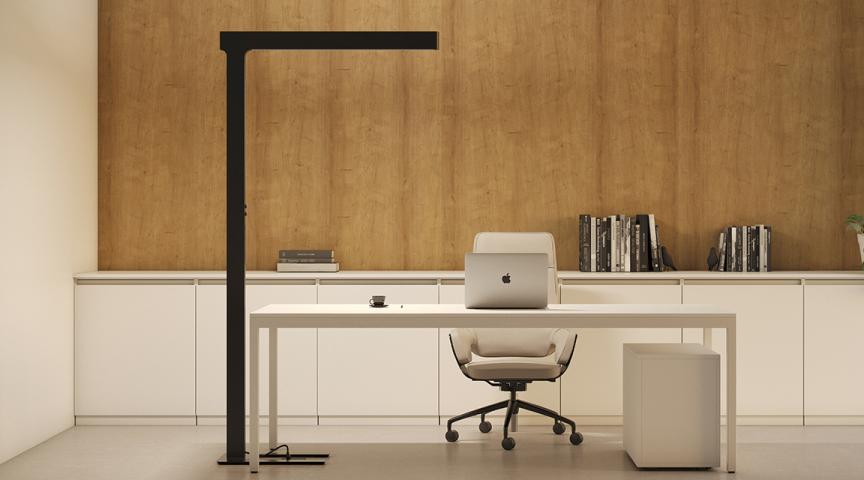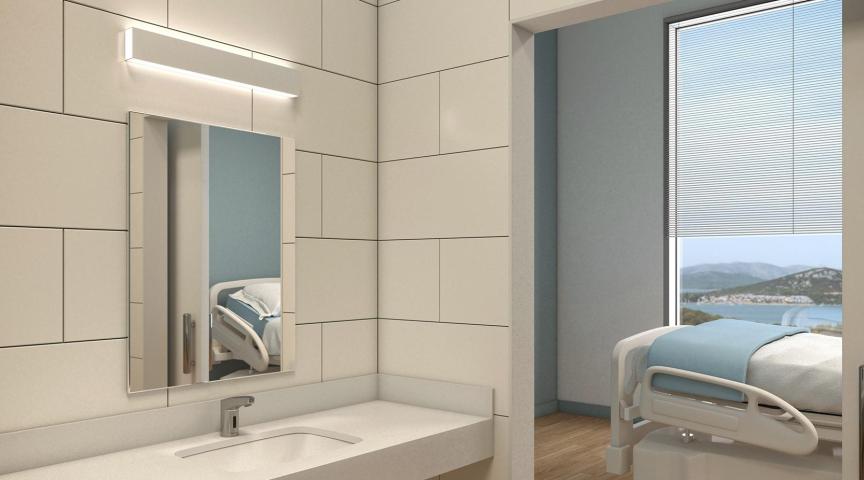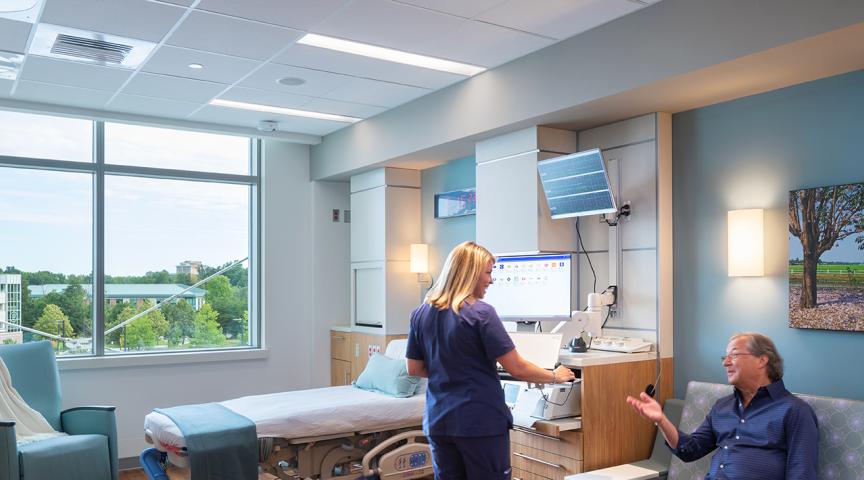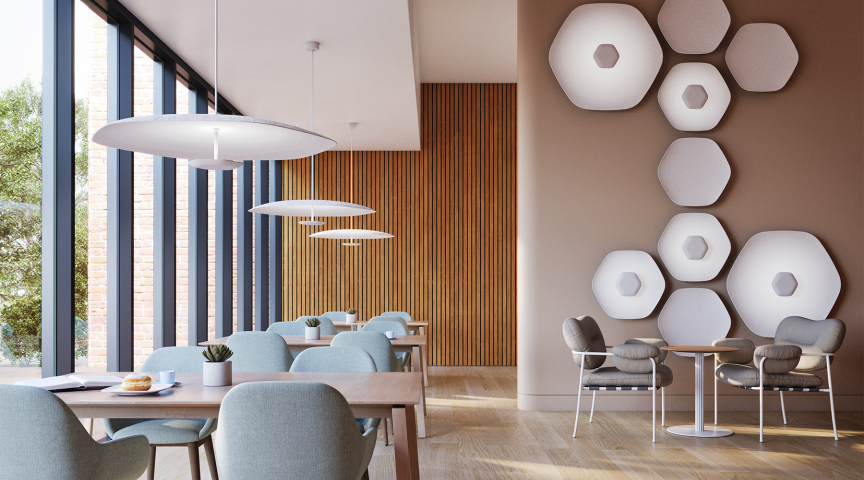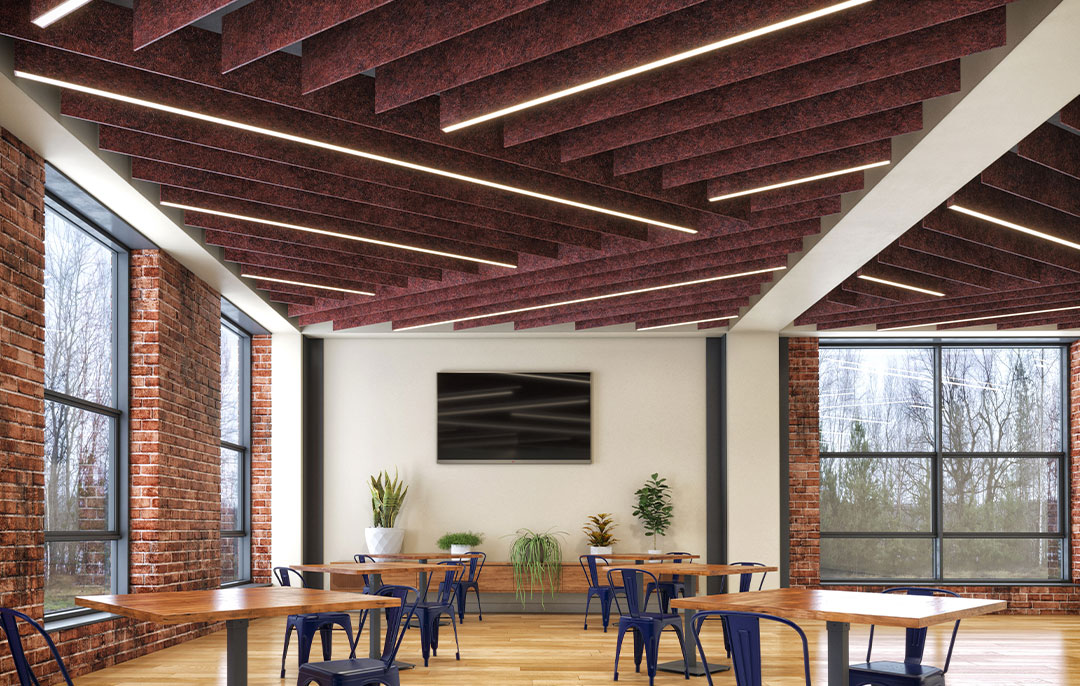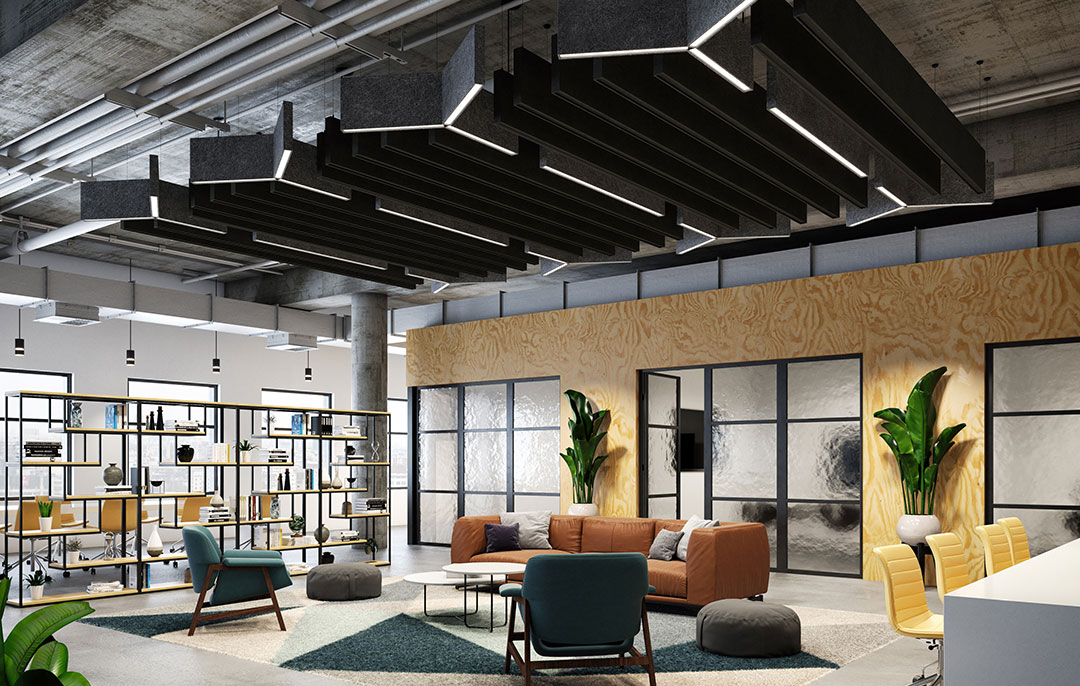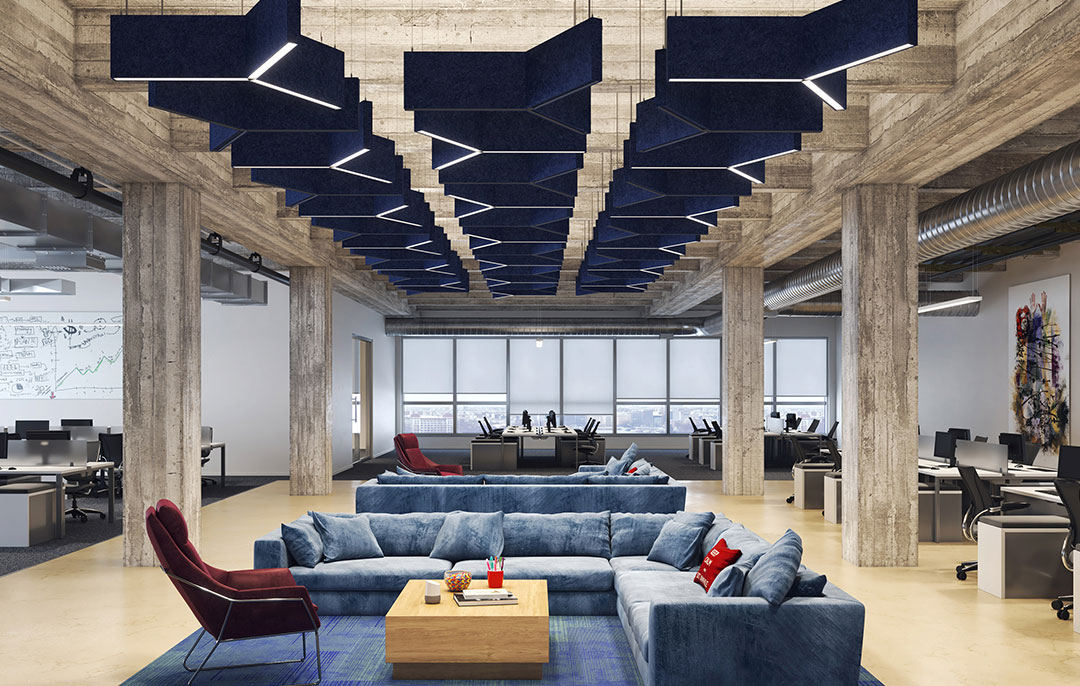Acoustic lighting for your office
Shedding Light on Noise Pollution
An unexpected solution can be found in the ceilings of open-plan offices all over the country – using acoustic lighting to curtail the spread of unwanted noise.
A recent article in the New York Times reported that 70% of offices in the United States are configured as open-plan spaces, and though it’s often touted as a sign of a collaborative and supportive corporate culture, that layout has sparked backlash by the occupants of those spaces.
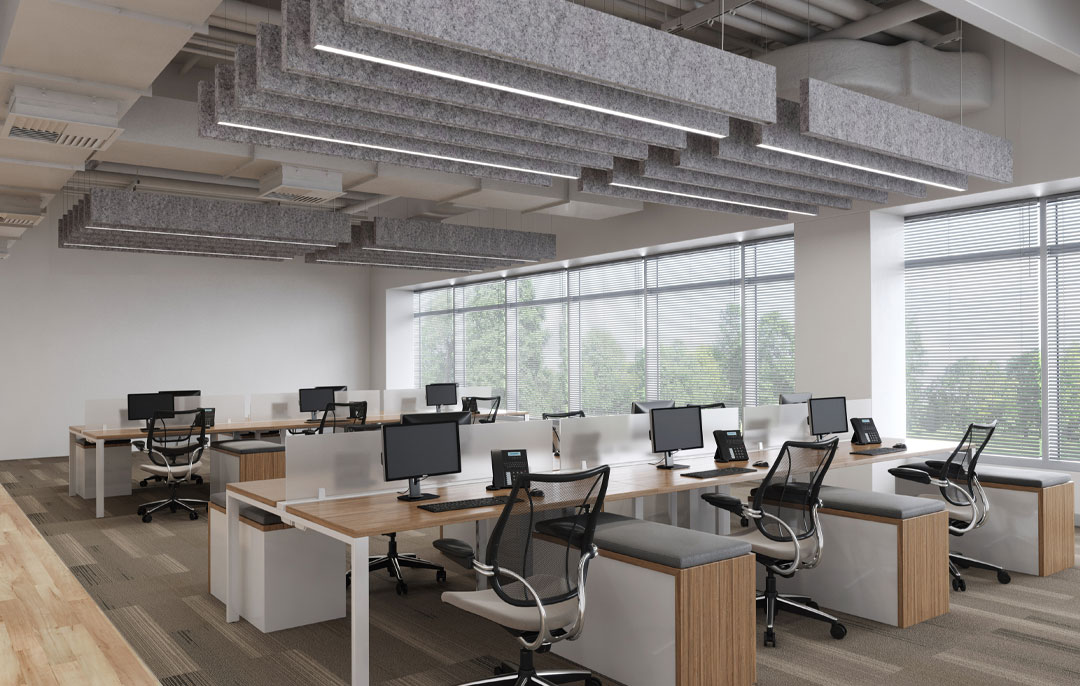
The article described the inherent lack of privacy and its effects, also noting that the cooperation that such spaces are intended to encourage generally does not happen. In fact, a study by the Harvard Business School found that face-to-face interactions fell by as much as 70% in open-space plans. According to a Harvard Business Review article, a lack of sound privacy was far and away the biggest drain on employee morale. Additionally, The Sound Agency, a firm that advises businesses on how to design sound in their physical spaces, reports that office workers are 66% less productive in an open-plan office. In response, organizations are seeking innovative and effective solutions to mitigate sound, one of which is acoustic lighting.
Combining sound control and lighting helps to create environments that address employee wellbeing, productivity, and comfort, while providing a positive impact to the organization’s bottom line. “Employee wellness is of increasing interest to companies now,” said Scott Delano, Design Director at Wright Heerema Architects. “With so many workspaces in an area with an open ceiling, it’s critical to incorporate acoustic controls into that environment.” It is even more crucial to consider these factors as architecture and design firms are defining the post-COVID office, which will likely entail more collaborative spaces. The nature of the work performed will increase overall noise levels unless acoustics are thoughtfully considered.
More broadly, noise distractions are a major impediment to creating functional workspaces. “Acoustics play a huge role in employee productivity,” says Caterina Hutchinson, NCIDQ LEED AP, of Sheehan Nagle Hartray Architects. A study by the University of Sydney found that a lack of sound privacy is the most significant drain on employee morale, and other research indicates that workers lose as much as 90 minutes of productive time every single day because they cannot concentrate properly. “Acoustic lighting is a very practical way to reduce noise pollution in a semi-raw space. It allows users to perform tasks more efficiently because of that enhanced sound control,” Hutchinson adds.
Unsurprisingly, acoustic pollution affects more than just our ears, according to Dr. Wolfgang Babisch, an environmental noise researcher with the German Federal Environmental agency. “Exposure to noise arouses the nervous system, causing rising blood pressure and the release of stress hormones,” he said. “These instinctive responses stress the cardiovascular system and give rise to negative outcomes, such as anger and exhaustion.” Stressed employees are also more vulnerable to headaches, digestive disorders, ulcers, and hypertension.
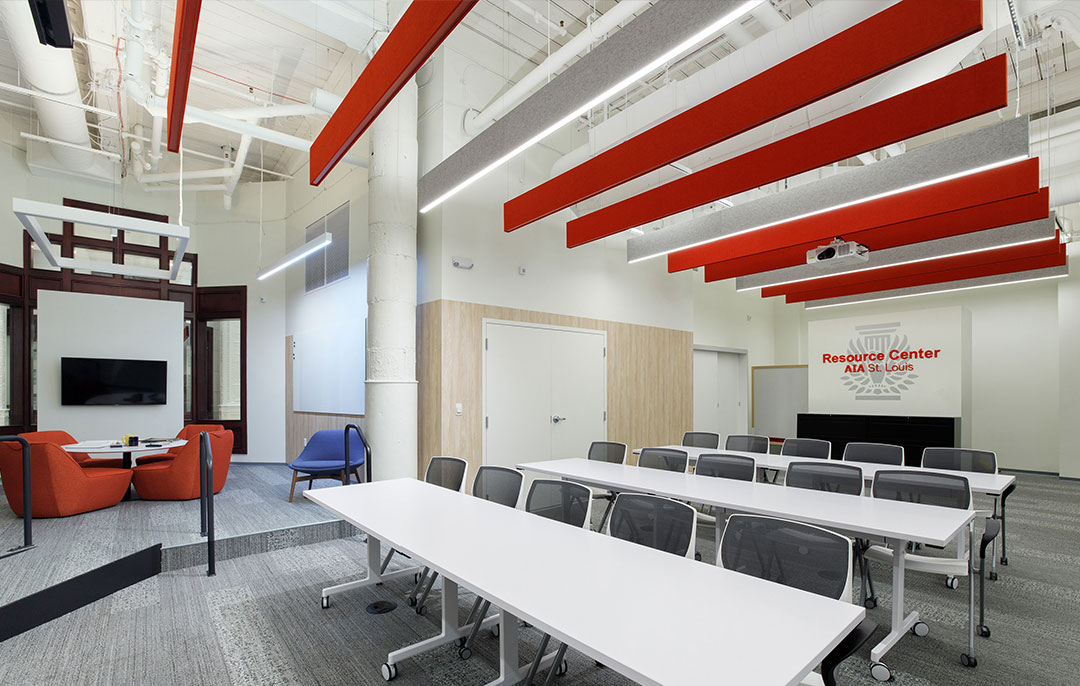
Incorporating acoustic lighting into the workplace is a more comprehensive solution than companies might think, partially due to its flexibility. “In an acoustically vibrant space, facilities teams and space planners face a wide range of challenges,” says Delano. “And, with a fully integrated acoustic lighting system, teams have the opportunity to address several of these issues at once, while providing short-term personalization and long-term flexibility.”
Architectural lighting manufacturers have introduced a wide range of integrated acoustical ceiling and lighting systems that not only address noise issues but deliver optimal illumination levels while creating a cohesive aesthetic. Solutions can be customized almost infinitely through a wide range of colors and environmentally efficient options, like integrated luminaire and baffle systems that include polyethylene terephthalate (PET), an eco-friendly polyester-based felt that contains a high percentage of recycled content from plastic bottles. These ceiling systems absorb sound with minimal physical interruption. “It’s an effective way to maintain an open ceiling while managing acoustic performance,” Delano said.
An additional benefit of these intentional lighting choices is their ability to strengthen brand identity. As companies will place a greater emphasis on their offices becoming a place where employees experience and connect with their brand, incorporating brand colors and creating work areas that foster a positive experience will become increasingly critical. “Strategically placing higher light levels in areas of more importance to the company or the brand helps to establish and reinforce the culture,” Delano said. “Lighting and color are great vehicles to express or enhance a client’s image,” Hutchinson added. Focal Point, for instance, offers dozens of PET color options and a wide range of lumen outputs, which can be used to customize a space through light and color combined. Plus, an integrated lighting and baffle system that helps reduce noise issues by shifting the acoustical treatment to the ceiling in large, open spaces gives owners the ability to use easy-to-maintain hard surface flooring with typically longer life, without compromising the overall functionality of the space.
Whatever the goal – brand-building, increased productivity and efficiencies, or the well-being of employees – an integrated acoustical lighting system can be implemented and optimized to support it, while positively impacting bottom lines. “These solutions create spaces that are more appealing, functional, and effective,” added Hutchinson. “We are working to create more opportunities to collaborate, socialize, focus, or relax. The end result is increased employee well-being and productivity; it’s not only a win for organizations, but their people as well.”






